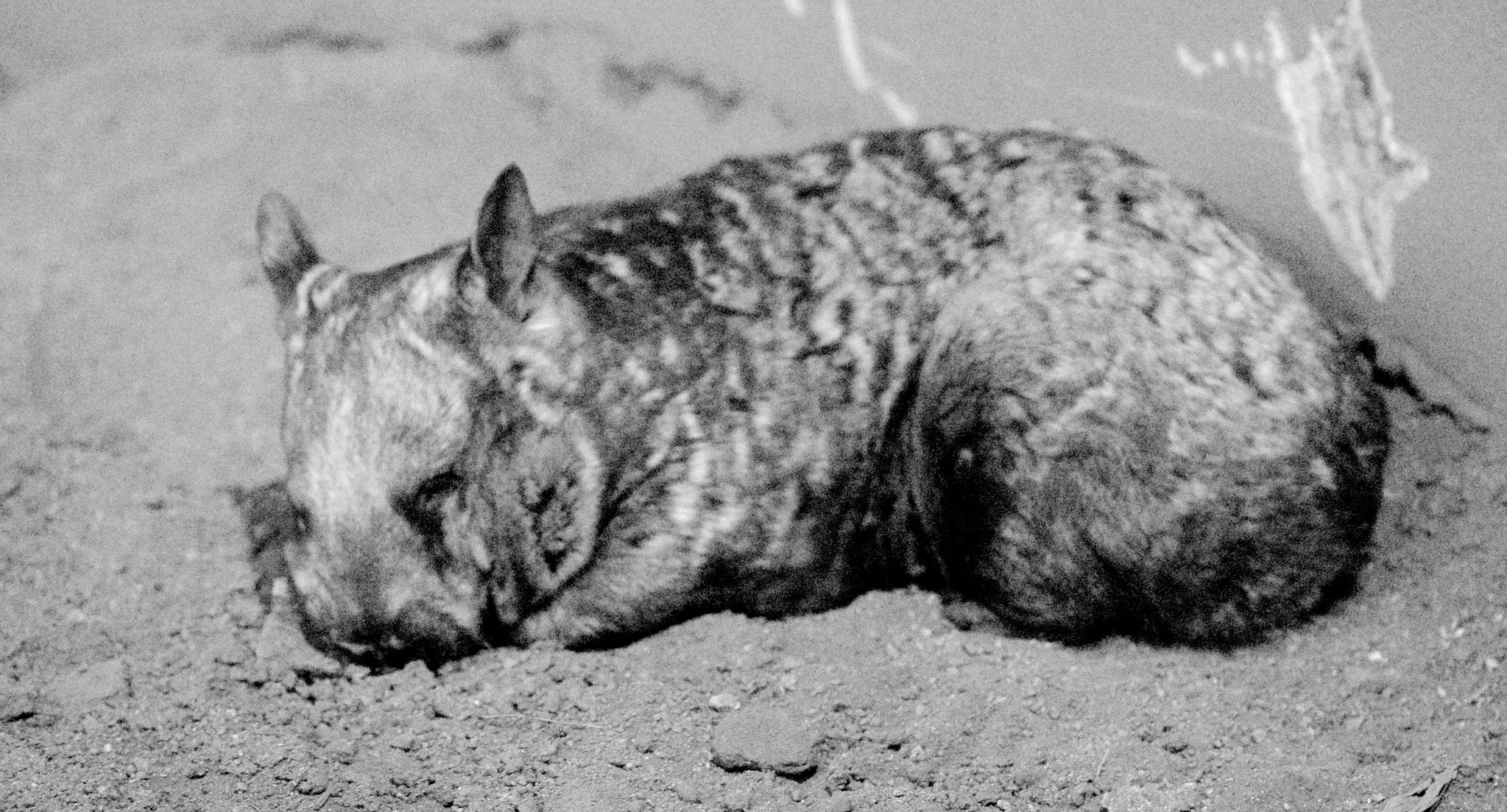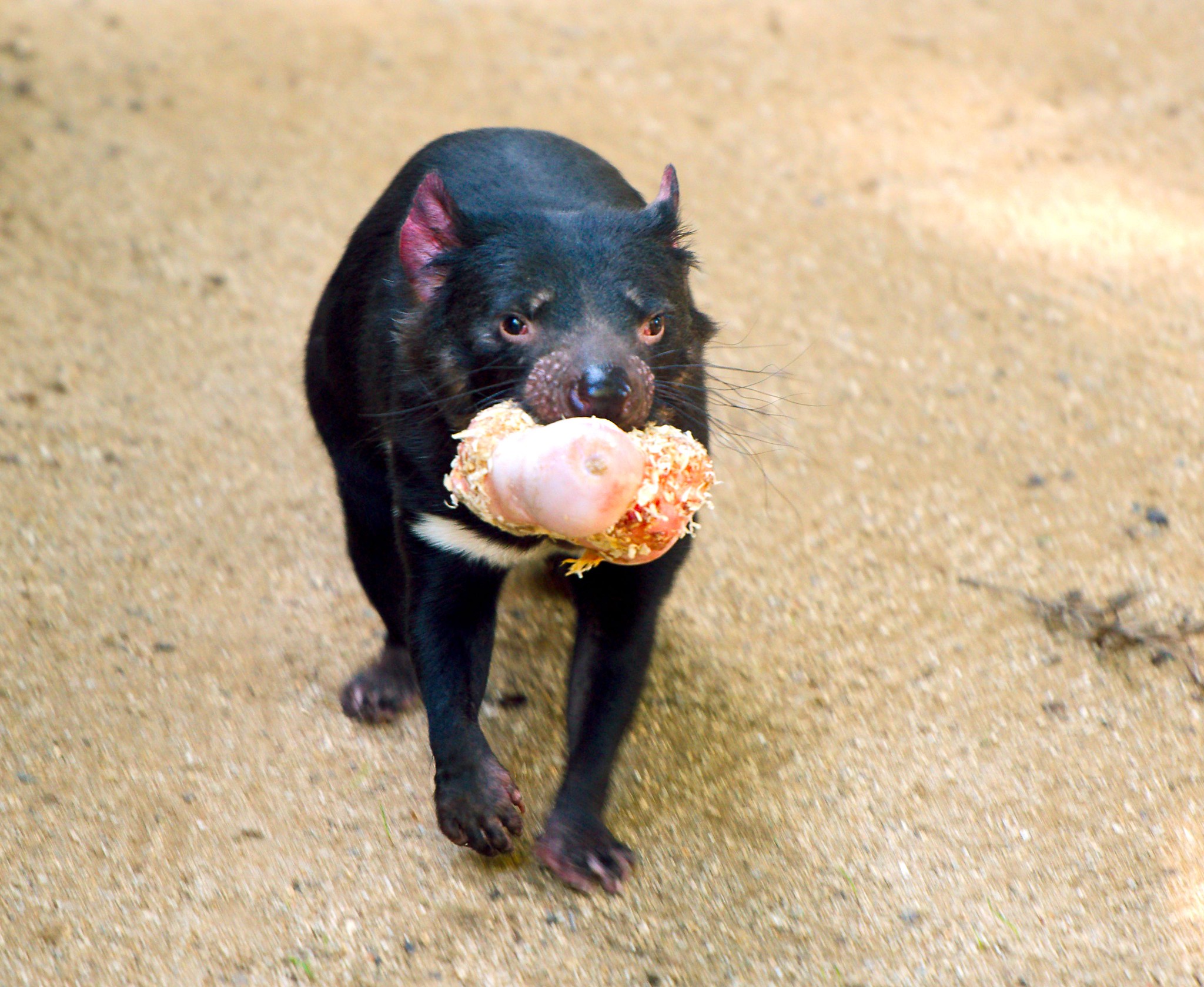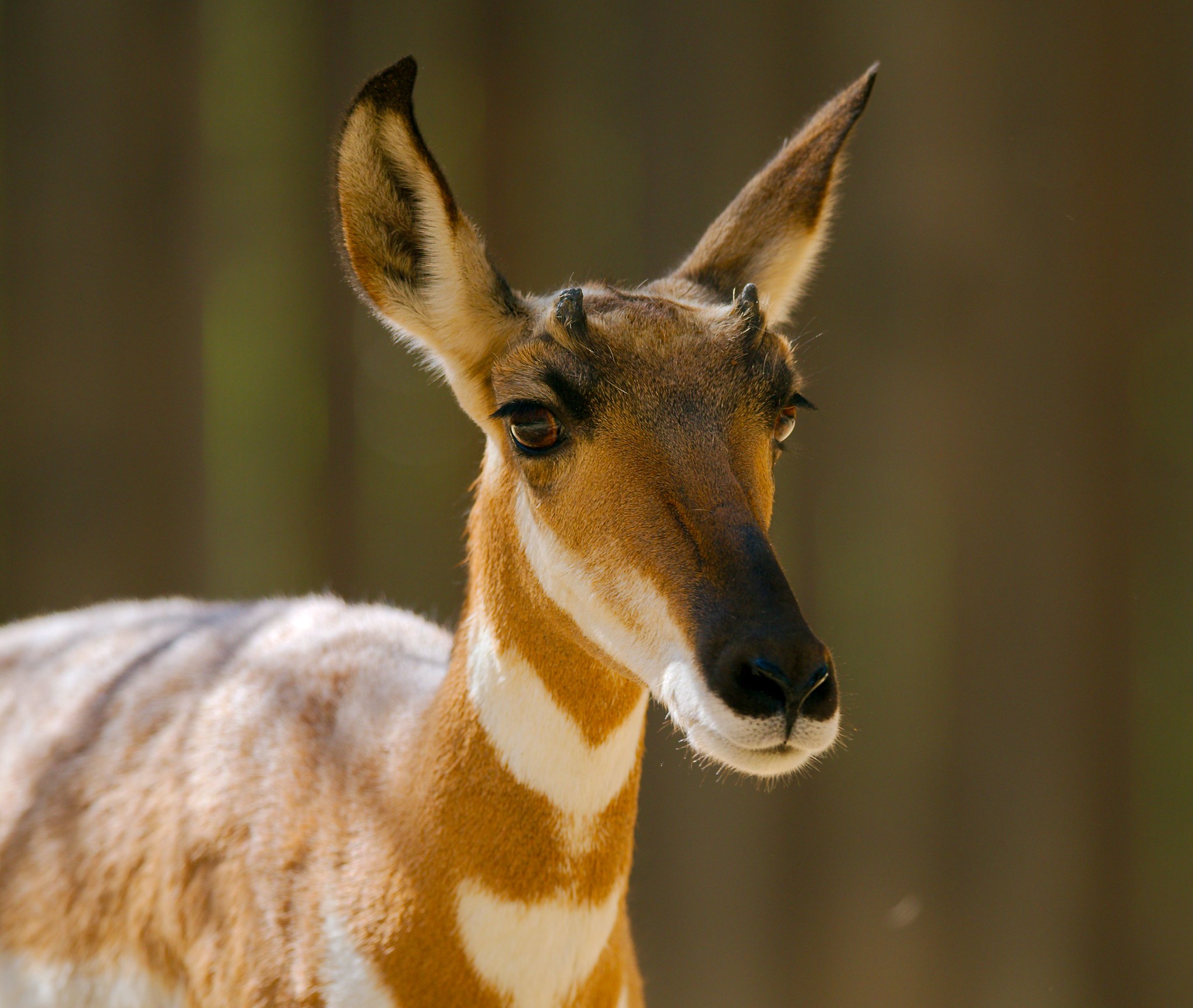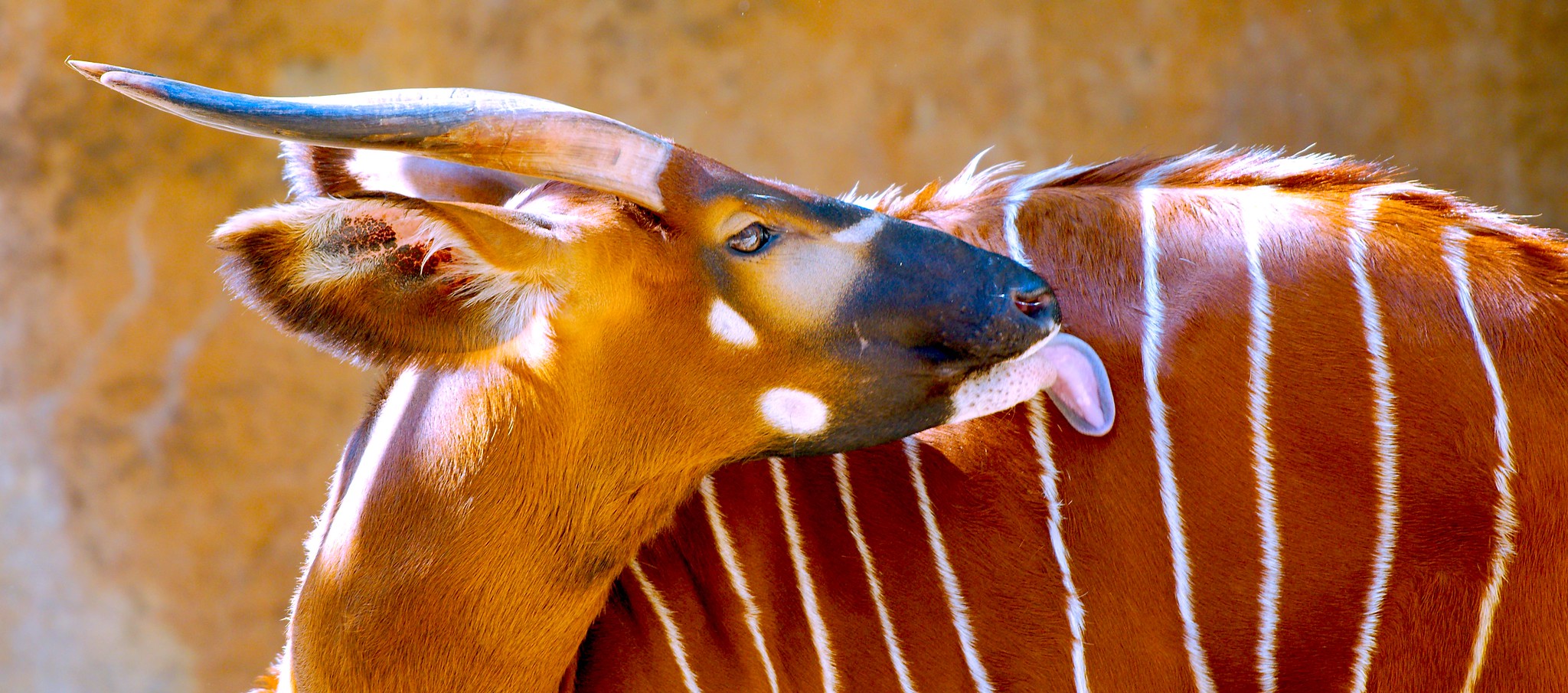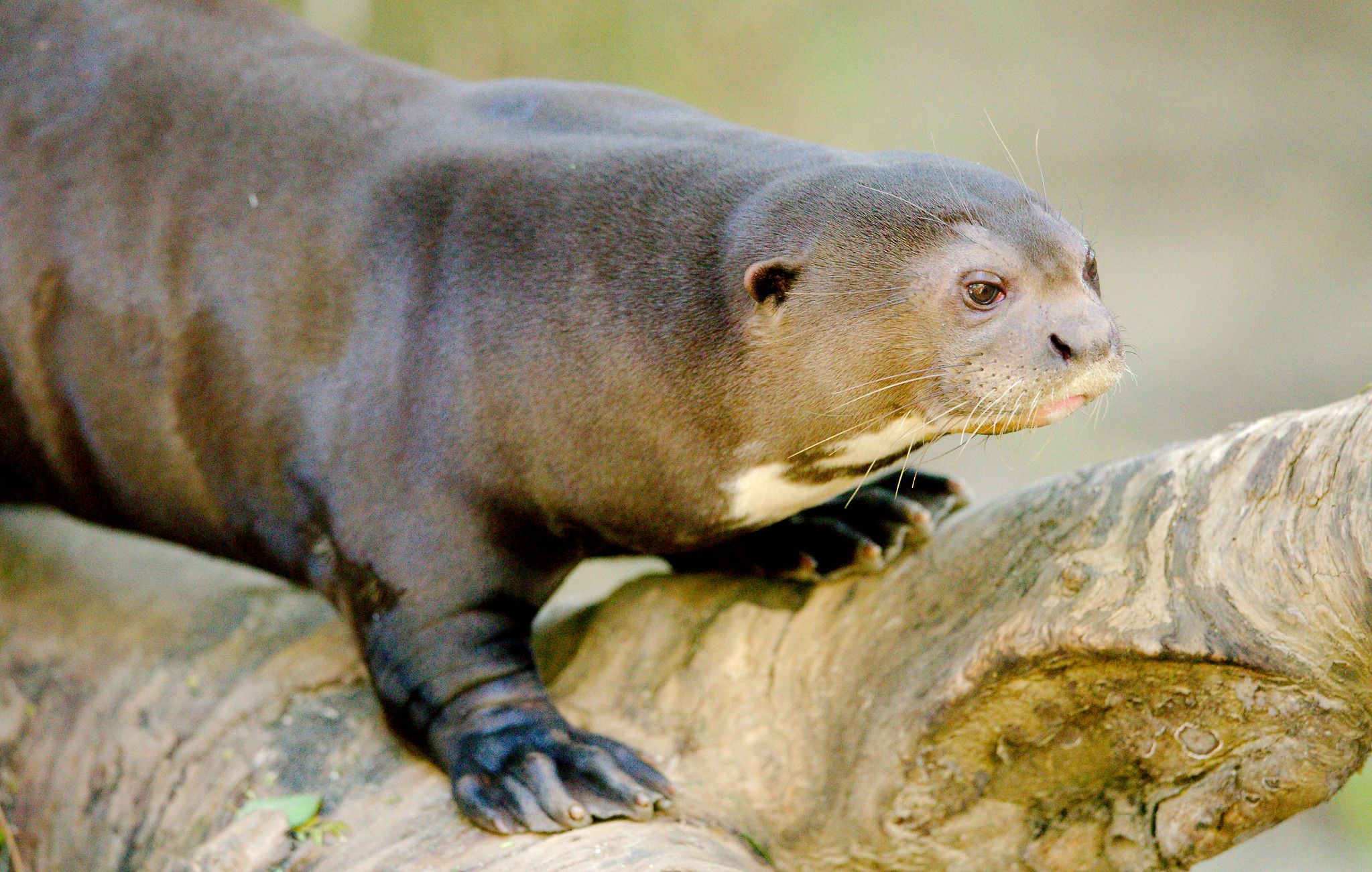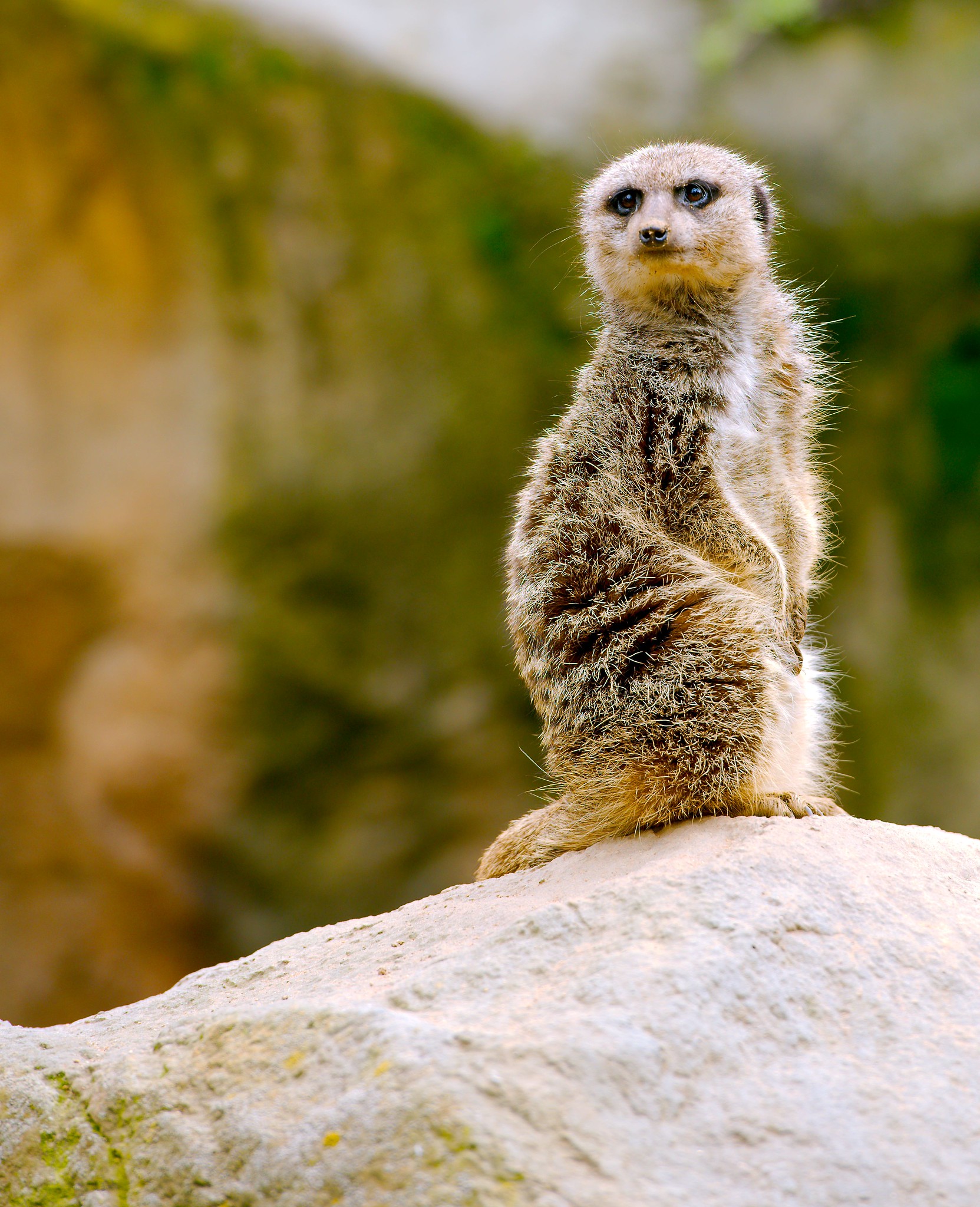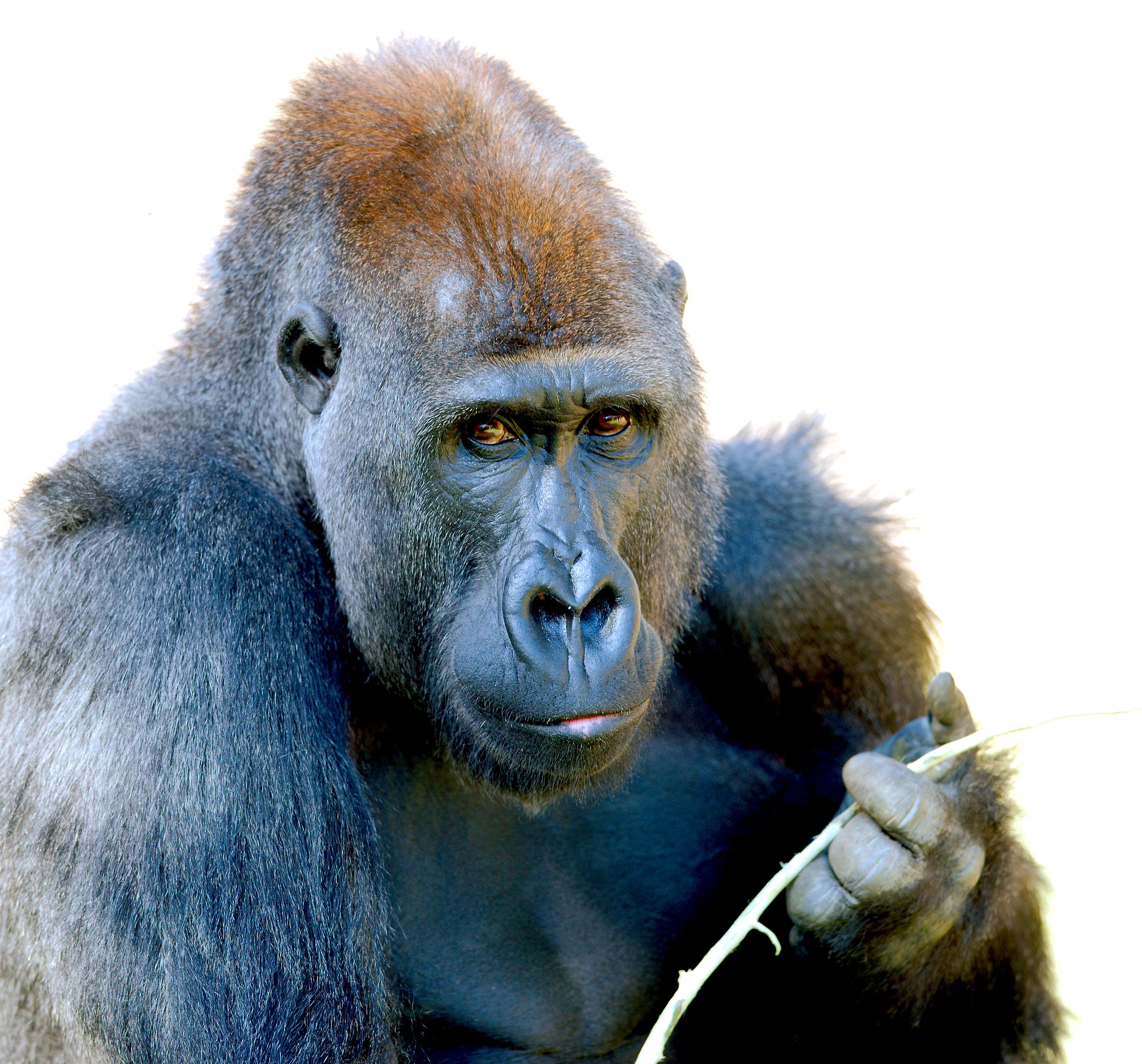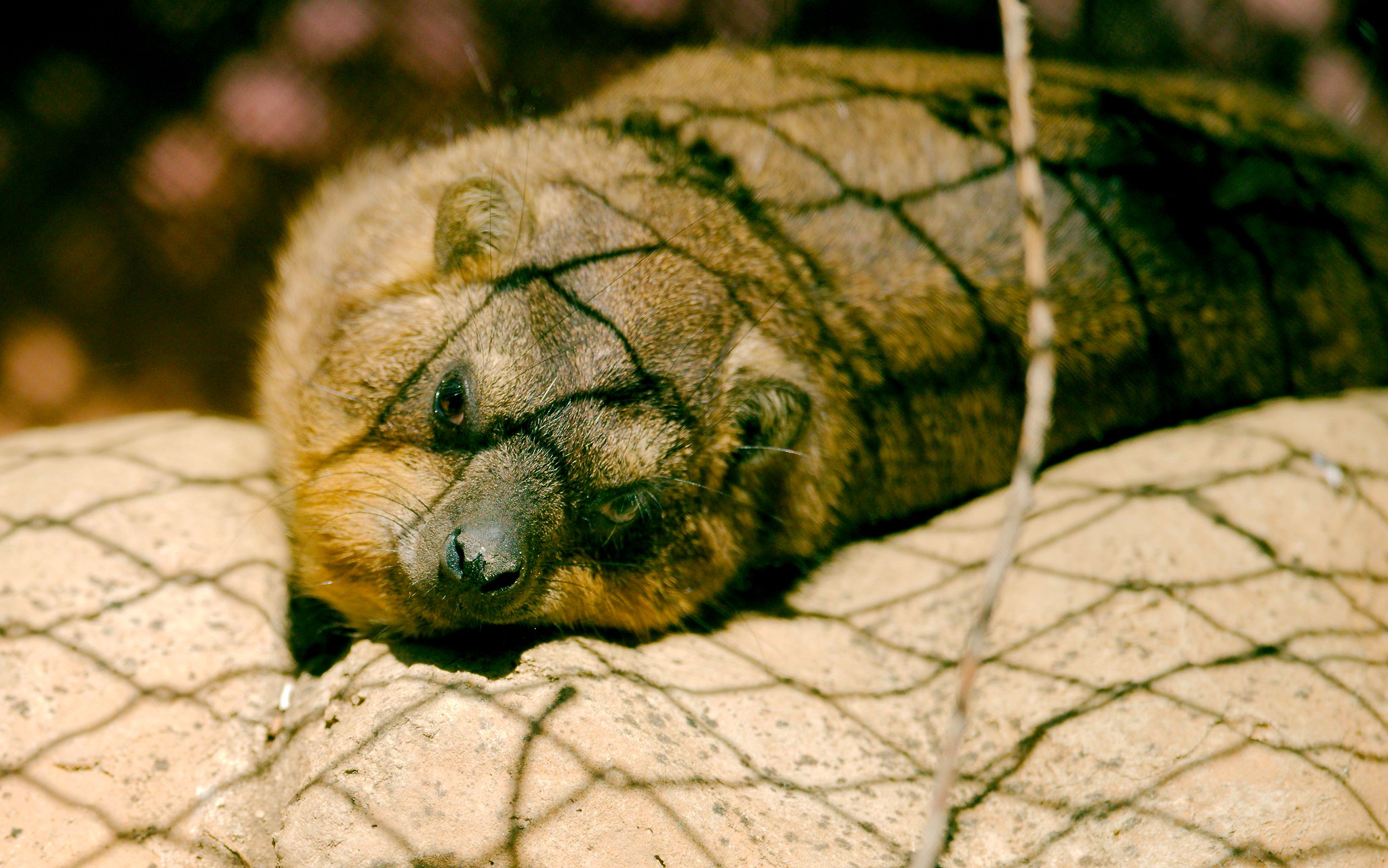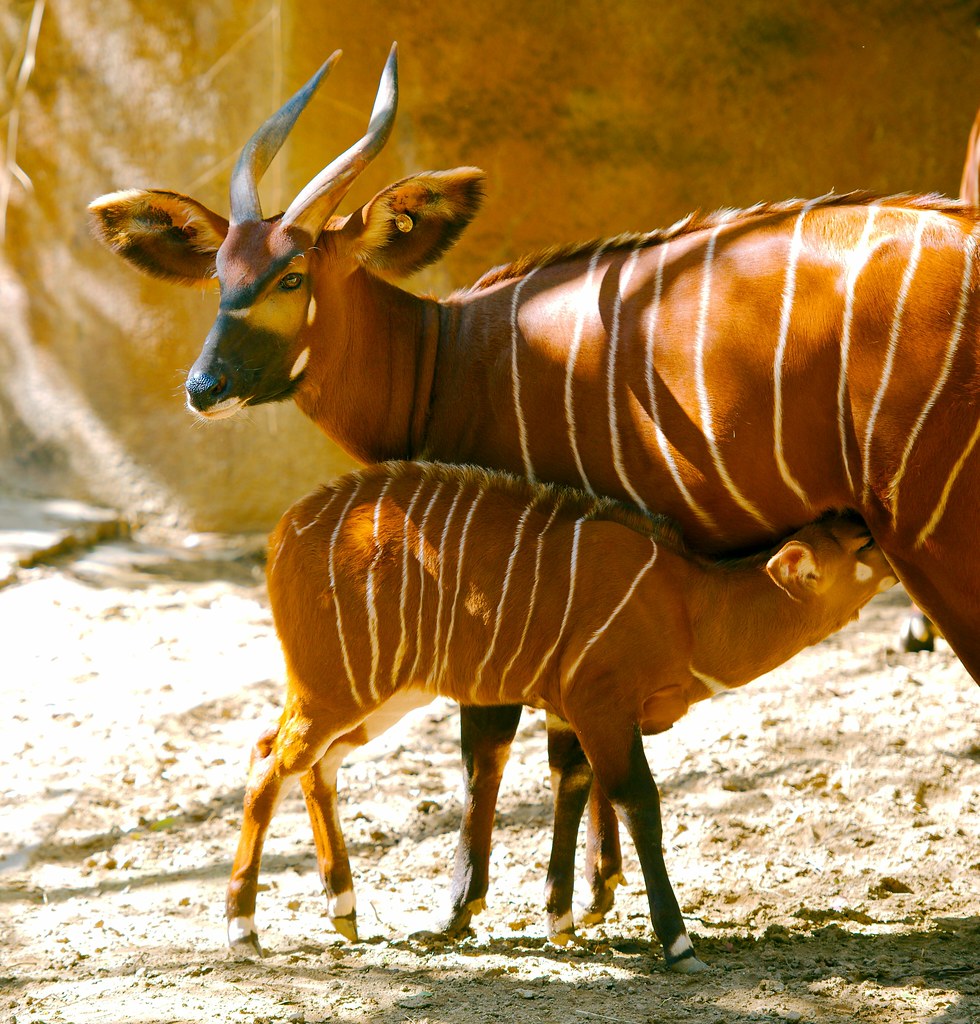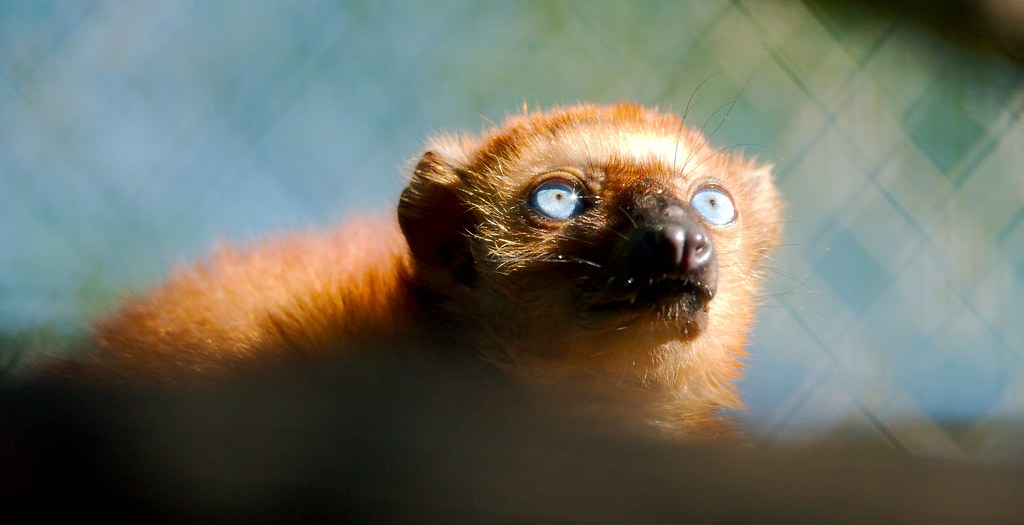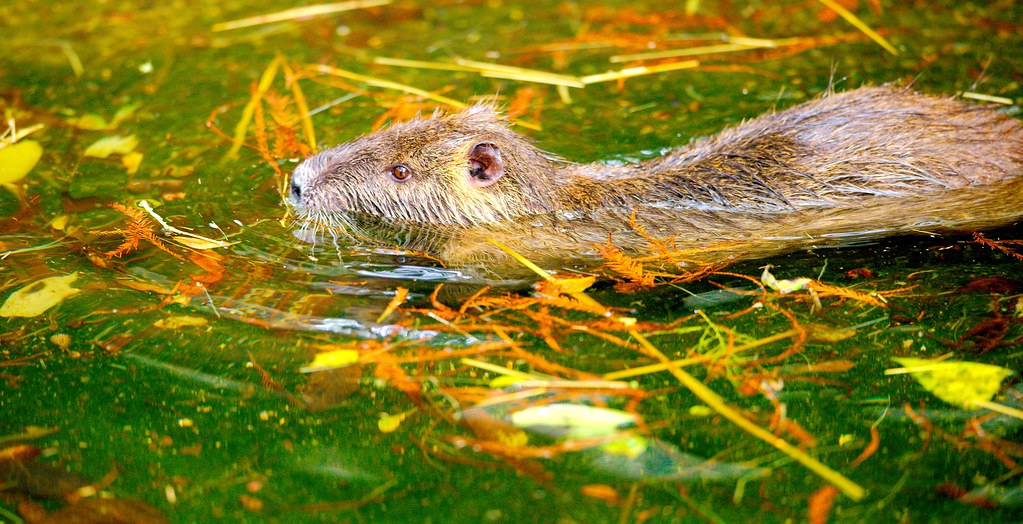The wombat enclosure at the LA Zoo is kept so dark that it is almost impossible to see anything. For those who follow such things, this show was a 1/6 of a second exposure at f/3.3 and ISO 12,800. I am optimistic that my newer experiments with low light photography will allow me to do better the next time I visit.
Category Archives: Mammal
Short Nosed Echidna
The echidna is a monotreme like the platypus. They can be found in some zoos but, with them being very nocturnal, it can be very hard to get good photos of them. I lucked out that on this one day, there were two of them just wandering around as if they didn’t know it was daytime.
Now I just need to photograph three more species of echidna and a platypus and I’ll have collected the whole set.
Tasmanian Devil
Tapir
Peninsular Pronghorn
The pronghorn is doing fine. This is, however, a sub-species of pronghorn that lives on the Baja California peninsula in Mexico.
It looks almost entirely like the regular pronghorn, from which it has been isolated long enough to start to form its own species. However, this particular breed of pronghorn is down to 150 individuals in the wild. Several zoos are working to species.
But what happens if they fail? If we lose this species, and the Baja area no longer has these “ghosts of the desert”? Will we let them fade into myth, a fading memory that only pops up here and then when someone gets a glimpse of white and tan in the far distance? Will this become their Loch Ness monster, their Bigfoot?
Or will we take some of our existing pronghorn from elsewhere in North America and just plop a herd back in that area? If we did that, would it be the same? For many, yes. Could the transplanted animals thrive? Quite possibly. Would there be any practical difference between letting the current pronghorns die out and just replace them once the land has been repaired? Most would say no.
150 would say yes.
Bongo
Giant River Otter
The giant river otter is difficult to find in zoos and in the wild. They are about twice the size of the North American river otter. Previously, I had only seen these otters at the Birmingham zoo, where the exhibit was indoors and the light made photography difficult. At the LA zoo, they have truly impressive amount of outdoor space … even more impressive given the value of land in the area. I suspect these otters work consulting jobs when the zoo closes to be able to afford it.
Meerkat performing Hero and Leander
Hippo
Gorilla
Cape Rock Hyrax
Elephant
Bongo
The bongo almost died out from disease in the 1890’s. More recently, growing human populations have created another threat.
As is common practice, some bongos were rescued and bred in zoos until enough time had gone by to repair the environment. Then, they were re-introduced to their native areas. Much to people’s surprise, though, they were not welcomed as having been missing. Instead, now they are being poached at a level that has not before been seen. The theory is that, when the bongos died out in the local area, the superstition against eating or touching bongo (believed to cause epilepsy) died out as well. So more bongos were eaten.
Interestingly, today, a new belief is arising to protect them. As more westerns visit the area, locals are learning that the bongos are worth more in ecotourism and trophy hunting fees than they are as food.
Global economics seems to be replacing traditional faith systems everywhere.
Blue Eyed Black Lemur
The blue eyed black lemur is brown (well, the females are).
It is also one of the most endangered primates on the planet, expected to go extinct in the wild by 2026.
The way they do these calculations is interesting. As is often the case, not enough is known about the species to truly calculate a “death date”. Instead, assumptions are made:
– Assumption that a generation is 8 years long
– Knowing the rate of habitat degregation, then comparing it to the generation length … in this case, more than 80% habitat loss in three generations
– Amount of population fragmentation and density in remaining pockets, ranging between 24-97 individuals per square kilometer
– Group size of 4-11 individuals
– Infant mortality of around 23%
– What the animal eats – in this case, we’re fortunate, as they are highly omnivorous
So the calculation basically says: How many do we have? How quickly do they make more of themselves? How quickly do they die? Given what we know about what they eat and where they live, as things change, how much sooner will they die and how much more slowly will they reproduce? That’s your projected death date.
The good news is that you can change this number by:
– Improving their habitat through education of native peoples, funding, and experimentation
– Helping them to reproduce more quickly through habitat creation, genetic analysis, and artificial insemination
– Helping them to live longer and therefore reproduce more often, through veterinary and nutritional assistance
There is only one type of organization that focuses on all three of these activities.
Zoos.
Manatee
Manatee
Red Fox
Otter
This otter couldn’t sleep until he finished fact-checking “Dreams” by Fleetwood Mac
You want your freedom
Play the way you feel it
Of your loneliness
I keep my visions to myself, it’s only me
Have you any dreams you’d like to sell?
Orangutan
Nutria
This is the first actual nutria I’ve seen, which means I get to tell the story about confusing South American mammals.
It is not uncommon for native peoples to use different classification systems than is used by the Western-educated post-colonial developed countries. This shouldn’t come as a surprise because the way they interact with these animals is very different. Let’s start with the naming.
In English, German, Chinese (various variants), and Russian, this animal is called the “nutria”. However, in Spanish, the word “nutria” refers to what we call the beaver. Since this is confusing, in Spanish, this animal is called the “coypu”, based on the Mapuche language used in Chile and Argentina. In French, it’s a “ragondin”. But, just to make things confusing, in Dutch, it’s a beverrat. Secondary names in German, Italy, and Swedish include “biberratte” (beaver rat), sumpfbiber (swamp beaver), castorino (little beaver), or sumpbäver (marsh/swamp beaver).
OK, so far we know that it’s beaver-like but that it’s not actually a beaver. Now we get to talk about religion.
As some of you know, there is a rather major religion that is now popular in Central and South America … but the path to its popularity wasn’t exactly straightforward. One aspect of that religion when it was being spread throughout the new world was that people were expected to fast on Friday and/or Lent (various reasons for this exist, but I couldn’t find a definitive answer as to why). In practice, “fasting” didn’t mean then what it means today. The point was to avoid eating warm-blooded mammals. In practice, this meant eating fish.
Now, fish just isn’t equally available to everyone world-wide, but rituals matter. At this point, there are numerous stories about what happened. There are stories about native villages refusing conversion because the fish in their rivers weren’t safe to eat. There are stories about missionaries unable to meet the Lenten requirement, and one involving the Bishop of Quebec. All of these stories involve petitions being sent to the Vatican asking for permission to eat things other than fish.
The obvious solution, of course, was for the church to declare that these animals were, in fact, fish. The two decently documented stories I could find specifically allow beavers and capybara to be fish. However, because of the linguistic drift, according to the people I talked to Costa Rica, Nicaragua, and Peru (not a huge sample, admittedly), the pope has declared “nutria” to be fish … with whatever definition of nutria you prefer, be they beaver, capybara, coypu, otter, or any other rodent found in the water. This is why they’re okay to eat on Fridays and during Lent, but only if you’re native to Central or South America.
I was told that white people don’t eat them whatever day it happens to be.
